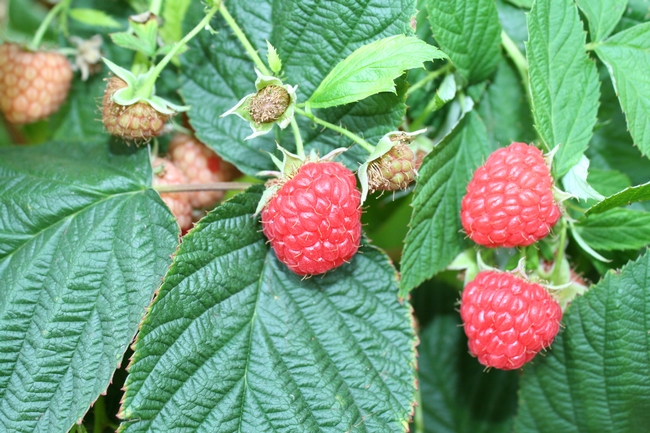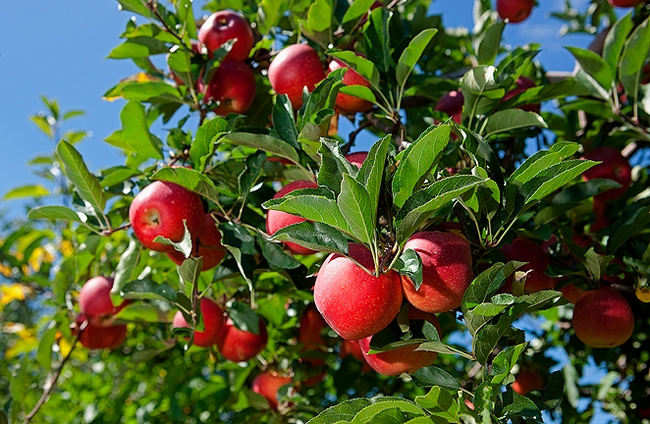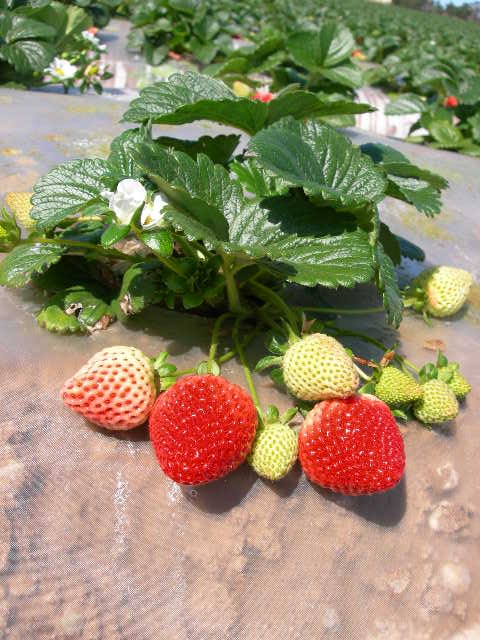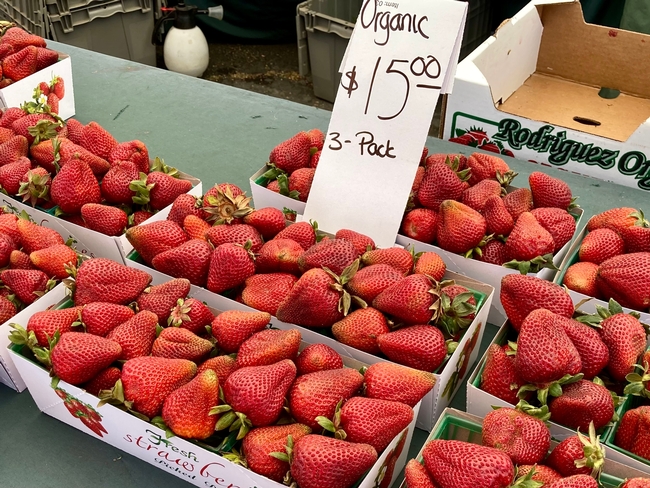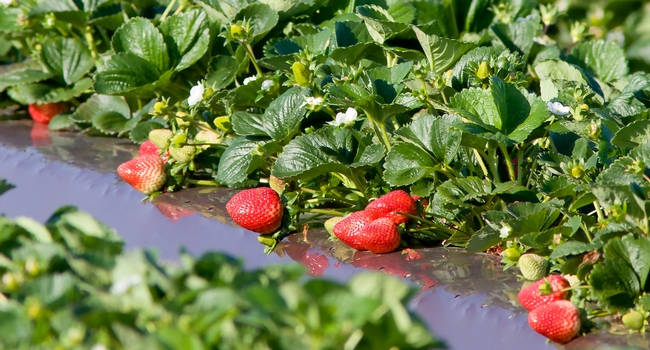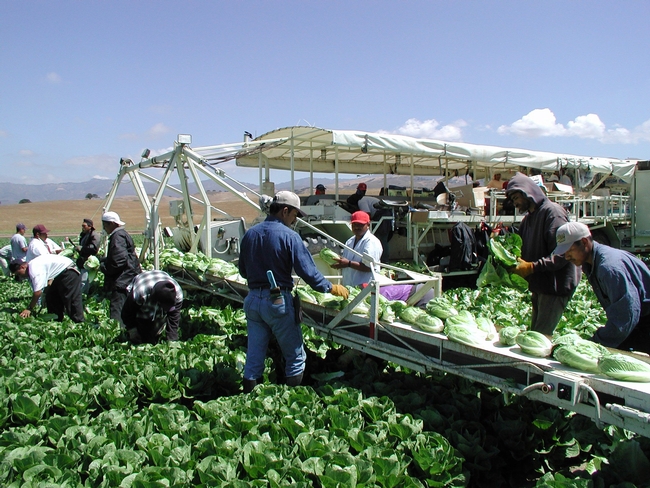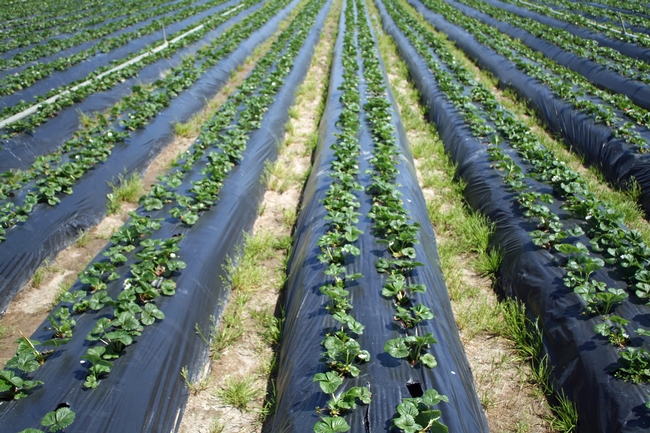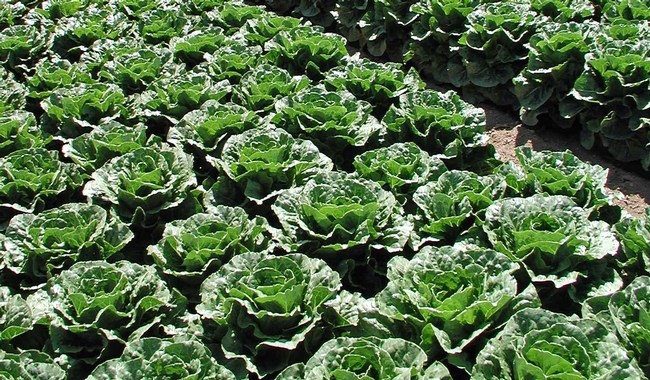Posts Tagged: Mark Bolda
New UC study estimates raspberry production costs on Central Coast
A new study that estimates costs and potential returns for growing raspberries on the Central Coast is available for free from UC Agriculture and Natural Resources, UC Cooperative Extension and the UC Davis Department of Agricultural and Resource Economics.
“These studies provide growers with a baseline to estimate their own costs, which can help when applying for production loans, projecting labor costs, securing market arrangements, or understanding costs associated with water and nutrient management and regulatory programs,” said Brittney Goodrich, UC Cooperative Extension specialist and study co-author.
The UC Cooperative Extension study focuses on raspberries grown in Santa Cruz, Monterey and San Benito counties for the fresh market.
The cost study models a management scenario for a 45-acre farm, 42 acres of which are planted to raspberries. The remaining acres are for the irrigation system, roads and buildings. Each study describes the cultural practices used for establishing, producing and harvesting raspberries, including land preparation, soil fertility and pest management, irrigation and labor needs.
The 36-page study shows costs for each operation, material inputs and costs, and cash and non-cash overhead costs in a variety of formats for three production years. A ranging analysis for each production year is also included and shows potential profits or losses over a range of prices and yields. The authors also note California's 2023 minimum wage and overtime rules.
The new study, “2023 Sample Costs to Produce and Harvest Raspberries,” can be downloaded from the UC Davis Department of Agricultural and Resource Economics website at https://coststudies.ucdavis.edu.
For a detailed explanation of the assumptions and calculations used to estimate the costs and potential returns for each crop, readers can refer to the narrative portion of the study.
For more information, contact Mark Bolda, University of California Cooperative Extension farm advisor, at mpbolda@ucanr.edu, Laura Tourte, emeritus UC Cooperative Extension farm advisor, at ljtourte@ucanr.edu, or Jeremy Murdock in the Department of Agricultural and Resource Economics at jmmurdock@ucdavis.edu.
Sample cost of production studies for many other commodities grown in California are also available for free at https://coststudies.ucdavis.edu.
New UC studies estimate production and harvest costs for coastal apples
Two new studies that can help Central Coast growers and other readers estimate costs and potential returns for both organically and conventionally produced apples for processing were recently released by University of California Agriculture and Natural Resources, UC Cooperative Extension and the UC Davis Department of Agricultural and Resource Economics.
“These studies provide growers with a baseline to estimate their own costs, which can help when applying for production loans, projecting labor costs, securing market arrangements, or understanding costs associated with water and nutrient management and regulatory programs,” said Brittney Goodrich, UC Cooperative Extension specialist and co-author of the studies.
The new studies, “2023 Sample Costs to Produce and Harvest Organic Apples for Processing” and “2023 Sample Costs to Produce and Harvest Apples for Processing,” can be downloaded for free from the UC Davis Department of Agricultural and Resource Economics website at https://coststudies.ucdavis.edu.
The studies focus on processing apples, not fresh market apples, which makes a difference in farming practices. Apples grown for processing on the Central Coast are mostly pressed for juice and sparkling cider.
“Ready-to-eat means that looks matter – blemishes and so forth are a big deal. Juice not so much, it all gets smushed in the end,” said co-author Mark Bolda, UC Cooperative Extension farm advisor for Santa Cruz, Monterey and San Benito counties. “Varieties grown here are Gala, Newtown Pippins, Mitsui and some Granny Smith.”
The cost studies model a management scenario for a 100-acre farm, 20 acres of which are planted to a mature orchard that produces apples for processing. The remaining acres are planted to apples not yet in production, caneberries, strawberries and vegetables. In each study, the authors describe the cultural practices used for organically or conventionally produced apples, including land preparation, soil fertility and pest management, irrigation and labor needs. Harvest costs are also shown.
In six tables, they show the individual costs of each operation for apples, material input costs, and cash and non-cash overhead costs in a variety of formats. A ranging analysis shows potential profits over a range of prices and yields.
For a detailed explanation of the assumptions and calculations used to estimate the costs and potential returns for each crop, readers can refer to the narrative portion of each study.
For more information, contact Mark Bolda at mpbolda@ucanr.edu; Laura Tourte, emeritus UCCE advisor, at ljtourte@ucanr.edu; or Jeremy Murdock of UC Davis Department of Agricultural and Resource Economics at jmmurdock@ucdavis.edu.
Sample cost of production studies for many other commodities grown in California are also available for free at https://coststudies.ucdavis.edu
UC study breaks down costs of growing organic strawberries
Thinking about commercially growing organic strawberries on the Central Coast?
To help prospective and current growers evaluate financial feasibility, the University of California has estimated costs to produce and harvest organic strawberries for fresh market in Santa Cruz, San Benito and Monterey counties.
“This revise of the last cost-of-production study incorporates the newest in labor costs along with updates on cultural techniques,” said study co-author Mark Bolda, UC Cooperative Extension strawberries and caneberries advisor in Santa Cruz, San Benito and Monterey counties.
The new study, “Sample Costs to Produce and Harvest Organic Strawberries in the Central Coast Region-2022,” has been released by UC Agriculture and Natural Resources and UC Davis Department of Agricultural and Resource Economics.
The analysis is based on a hypothetical well-managed organic strawberry farm using practices common to the region, but the costs, materials and practices shown in this study will not apply to all farms. Growers, UC Cooperative Extension farm advisors and specialists, pest control advisers and others provided input and reviewed the methods and findings of the study.
“Current growers can use it as a baseline to compare with their own cost and returns estimates to make sure they have an accurate picture of the profitability of their organic strawberry enterprise,” said co-author Brittney Goodrich, UC Cooperative Extension agricultural economics specialist. “Many agricultural lenders use these studies as a baseline to determine whether to approve operating or investment loan requests from current and potential strawberry growers.”
The researchers assume a farm operation size of 30 contiguous acres of rented land, with strawberries are planted on 27 acres. The study includes a list of suitable strawberry varieties for the region, but no specific variety is used in the study. The crop is harvested by hand and packed into trays containing eight 1-pound clamshells from April through early October, with peak harvest in June through August.
The authors describe the assumptions used to identify current costs for production material inputs and cash and non-cash overhead. Ranging analysis tables show net profits over a range of prices and yields. Other tables show the monthly cash costs, the costs and returns per acre, hourly equipment costs, and the whole farm annual equipment, investment and business overhead costs.
The study's expanded section on labor includes information on California's new minimum wage and overtime laws.
“It's reached a wider audience this time through presentations of the material to students at Cal Poly [San Luis Obispo] and also a group of USDA officials at the California Strawberry Commission,” said Bolda.
“All of this just underlines the value of these studies to California growers and others working in agriculture,” Bolda said.
Free copies of this study and other sample cost of production studies for many commodities are available. To download the cost studies, visit the UC Davis Department of Agricultural and Resource Economics website at https://coststudies.ucdavis.edu.
This cost and returns study was funded by the UC Davis Department of Agricultural and Resource Economics.
For additional information or an explanation of the calculations used in the studies, contact Jeremy Murdock, UC Davis Department of Agricultural and Resource Economics, at jmmurdock@ucdavis.edu or UC Cooperative Extension's Bolda at (831) 763-8025.
COVID-19 not a current threat to the food system, but California farmers still feel the pinch
COVID-19 does not currently pose major threats to overall global food security because adequate stores of staples — like wheat and rice — remain available. But the sustainability of California specialty crops may face greater hurdles, reported Laura Poppick in Scientific American.
Poppick spoke with two UC Agriculture and Natural Resources (UC ANR) scientists for perspective on the future of California agriculture considering the market and production constraints posed by measures to slow the spread of the coronavirus.
“Everybody is scrambling to figure out what to do,” said Gail Feenstra, deputy director of UC ANR's Sustainable Agriculture Research and Education Program. “There's just a lot of disruption.”
Specialty products — such as some fruits and organic produce grown on smaller-scale farms — are often sold to restaurants and farmers markets, many of which are now closed or have reduced service, rather than directly to the grocery stores that are still operating. Even if these farmers are able to continue working, they may have limited places to sell their goods, the article said.
Strawberries are another crop likely to be affected. Laborers picking strawberries typically work more closely than is advisable to prevent the spread of the virus, said Mark Bolda, a University of California Cooperative Extension farm advisor based in Watsonville. He said farmers are already making plans to spread workers between rows.
Strawberries, however, hit prime ripeness within a narrow window of just two to three days and must be picked quickly, Bolda says. Spacing workers may slow picking, and, "being slower is expensive."
Thinking about growing romaine or organic strawberries? UC ANR releases sample costs
Farmers who are considering growing romaine hearts or organic strawberries in California's Central Coast region can get some help determining whether the crop will pencil out for them.
UC ANR Agricultural Issues Center and UC Cooperative Extension have released sample costs to produce and harvest organic strawberries for fresh market and romaine lettuce hearts in Santa Cruz and Monterey counties.
A major difference between growing strawberries organically and the conventional practice is in weed control.
“Weed management is especially challenging for organic strawberry production because soil fumigation and most herbicides are not allowed under organic regulations,” said Mark Bolda, UC Cooperative Extension farm advisor in Santa Cruz County. “Weeds in furrows between the beds can be mechanically cultivated during the growing season, but most of the weeding will need to be done by hand from December through September.”
The cost analyses are based on hypothetical well-managed farming operations using practices common to the Central Coast region. The costs, materials and practices shown in the studies will not apply to all farms and are intended to assist growers in estimating their own costs.
The organic strawberry study assumes a farm with conventionally grown strawberry transplants planted on 27 contiguous acres of rented land. “Organic strawberry transplants are part of the picture now, but not standard by a long shot,” said Bolda, who co-authored the cost studies. The strawberry crop is harvested by hand and packed into trays containing eight 1-pound clamshells, from April through early October with peak harvest in June and July.
For romaine lettuce for the hearts market, the cost study assumes a farm of 1,500 non-contiguous acres of rented land, with romaine planted on 250 acres and rotated with other lettuce and cool season vegetable crops to assist with pest management and soil fertility. Lettuce is planted continuously from late December to mid-August along the Central Coast. To manage lettuce mosaic virus, Monterey County has a host-free period (December 7 – 21), during which time lettuce may not be planted. In this study, lettuce is planted in January.
For both the organic strawberries and romaine, ranging analysis tables show net profits over a range of prices and yields. Other tables show the monthly cash costs, the costs and returns per acre, hourly equipment costs, and the whole farm annual equipment, investment and business overhead costs. The authors describe the assumptions they used to identify current costs for production material inputs and overhead.
The authors have also expanded the section on labor, which includes information on California's minimum wage and overtime laws.
Growers, UC ANR Cooperative Extension farm advisors and other agricultural associates provided input and reviewed the methods and findings of both studies.
Free copies of these and other sample cost of production studies for many commodities are available. To download the cost studies, visit the UC Davis Department of Agricultural and Resource Economics website at https://coststudies.ucdavis.edu.
For more information about calculations used in the romaine hearts and organic strawberriesstudies, contact the Agricultural Issues Center at (530) 752-4651 or Mark Bolda at UC Cooperative Extension in Santa Cruz County at (831) 763-8025.
The cost and returns studies program is funded by the UC Agricultural Issues Center and UC Cooperative Extension, which are part of the UC Division of Agriculture and Natural Resources, and the UC Davis Department of Agricultural and Resource Economics.
